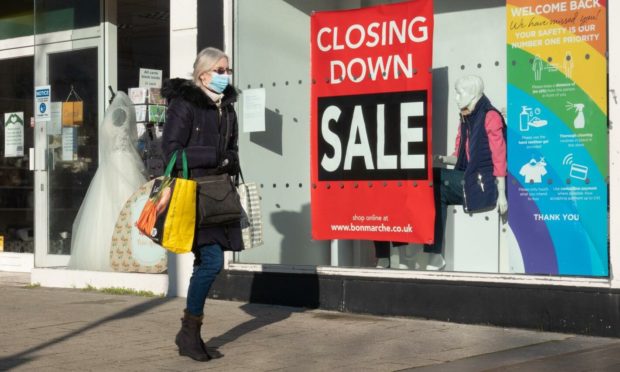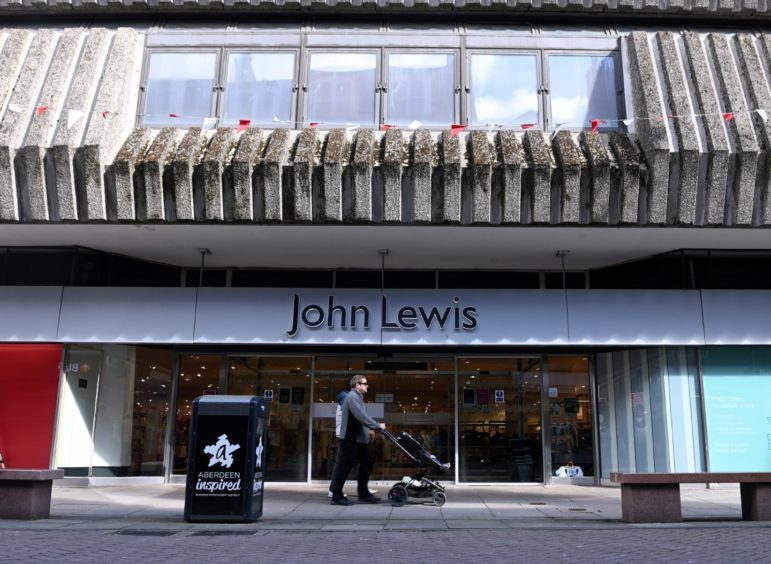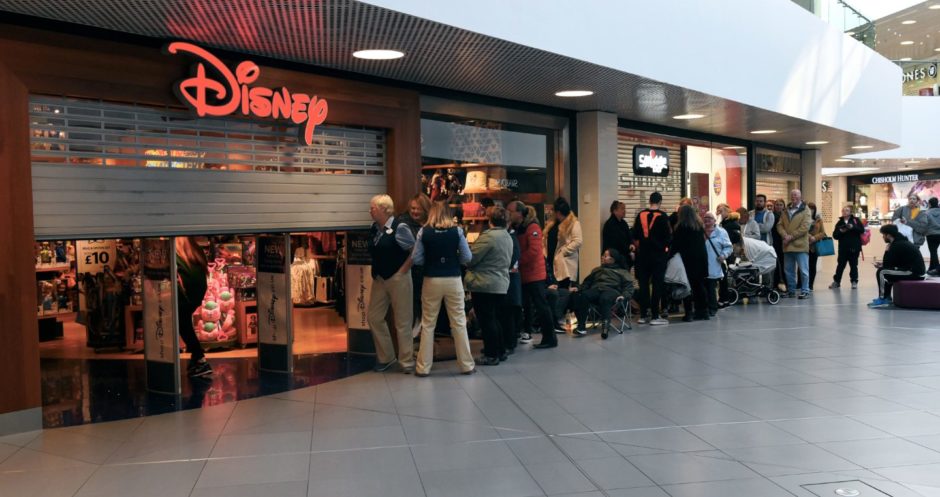Chain stores around Scotland shut at an average rate of 30 a week during the first six months of 2021, new figures show.
The research by professional services firm PwC and the Local Data Company reveals a marked acceleration – 780 shut in the first half of 2021, compared with just 344 openings.
This meant a net loss of 436 stores, representing a 2.8% decline in the total number between January and June this year.
What we are seeing now is the full impact lockdowns have had on the high street and shopping centres.”
Jason Higgs, head of retail for PwC in Scotland.
Casualties in Aberdeen included the city’s John Lewis and Debenhams department stores, as well as the Disney store in the Bon Accord Centre.
Inverness also lost a major department store when Debenhams shut its entire chain.
According to PwC/LDC, more than 8,700 chain stores closed for good across the UK during the first half of 2021, leading to a net decline of 5,251.
This change of -2.5% is an improvement on the -2.8% seen in the first half of 2020, but in Scotland a longer period under lockdown made early 2021 worse than the same period last year.
In the first six months of 2020 Scotland suffered a net loss of 393 (-2.4%) stores. There were 176 (-1.15%) net closures in the first half of 2019 and 274 (-1.79%) in the first half of 2018.
Over the 2020 calendar year, there were 1,264 closures and 612 openings (652 net closures) in Scotland by businesses operating more than five stores around the UK.
Government support, in particular extended furlough and business rates relief, has kept many shops in business, while a rent moratorium has prevented landlords from evicting operators due to non-payment of rent or arrears.
These measures have allowed stores to continue trading even where sites have been particularly hard hit by successive lockdowns.
Impact hits shopping centres hardest
Shopping centres were worst hit in Scotland during H1 2021, with just 23 new stores opened, against 163 closing.
This represents a 6% net decline – markedly higher than the 2.4% decline noted on the high street, where 550 closures were offset by 263 openings.
Scottish high streets proved more resilient than in the UK overall, where the net decline was 3%.
Jason Higgs, head of retail for PwC in Scotland, said: “We were already seeing a fundamental change in consumer shopping habits before the pandemic hit, and what we are seeing now is the full impact lockdowns have had on the high street and shopping centres, though without government support the picture would be considerably worse.
“The next six months are going to be crucial for the retail trade, and we will have to wait to see whether consumers will shop with their feet or their fingertips.”
Mr Higgs added: “From what we are seeing, consumers are still looking for a physical shopping experience for ‘revenge spending’ after a lengthy period at home.
“We still saw more than 300 new stores open in Scotland, so there are opportunities for retailers and hospitality operators who are able to open new stores or to move to better locations.”
PwC said retail parks fared relatively well during H1 2021, with many anchored by grocery, DIY and home furnishings retailers – categories that have outperformed others since the start of the pandemic.
Retail parks faring better
In Scottish retail parks, there were 67 closures and 52 openings during the first six months of this year, leading to a 1.1% decline overall.
With Covid safety a key consideration people still appear to be more inclined to drive to retail parks to avoid using public transport and the larger units allow for better social distancing measures.
Scottish retail footfall improving but still one-fifth below its pre-pandemic level
By contrast, shopping centres are often less conveniently located for consumers who want to shop locally and travel less.
They are also more likely to host fashion retailers and chain restaurants, which are amongst the hardest hit categories for net closures over the past year.
Meanwhile, a slump in high-street footfall has affected those multiple retailers located on high streets, particularly in large city centres.



